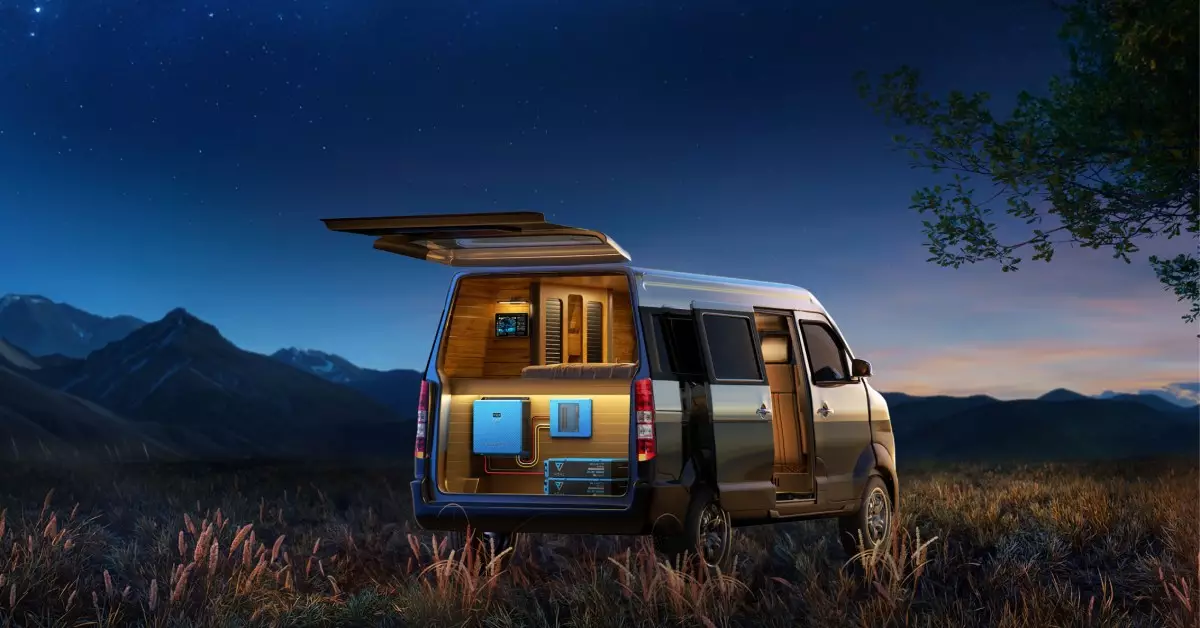In an era where independence from traditional energy grids is increasingly sought after, innovations like Bluetti’s RVSolar System signify a pivotal shift. While bespoke energy setups have historically dominated the off-grid scenario, requiring meticulous planning, extensive wiring, and hours of labor, emerging systems promise to streamline this process dramatically. Bluetti’s latest offering boldly claims a 30-minute installation window, a staggering reduction compared to the several hours custom solutions demand—even though skepticism remains about the true ease and universality of such rapid deployment. This product not only challenges the conventional approach but also advocates for a future where energy autonomy is accessible to a broader demographic, from vanlifers to remote cabin dwellers.
The core appeal of the RVSolar System lies in its touted simplicity. It consolidates multiple components—solar charge controllers, inverters, battery management—into a modular, ready-to-install package. The idea of screwing together pre-wired components in just half an hour sounds almost too good to be true, yet it embodies a significant leap forward from traditional setups that often involve complex diagnostics and custom wiring. This is an area where Bluetti’s design philosophy puts the user experience front and center, possibly empowering non-expert users to achieve off-grid energy independence with minimal fuss. For the modern nomad or eco-conscious homeowner, such innovation potentiates a level of control and flexibility previously limited to specialized technicians.
Power Capacity and Flexibility: Tailoring Off-Grid Living
Diving deeper into the technical prowess of the RVSolar System reveals substantial power reserves and configurability. With a maximum output of 5,000W AC and 1,360W DC, the system can handle most of the essential appliances and devices typical of off-grid living. Whether it’s running a roof-mounted air conditioner, powering an induction cooktop, or energizing water pumps and lighting, Bluetti’s solution offers robust support for daily needs. The fascinating aspect is its compatibility with hefty energy storage—up to 122kWh from Bluetti’s self-heated LFP batteries—enough, in theory, to sustain an off-grid household for over two months based on average consumption. For those who crave extensive autonomy, this capacity surpasses many traditional portable or stationary systems, offering peace of mind and resilience in remote locations.
This versatility is further enhanced by the system’s openness to third-party batteries—something EcoFlow and other competitors curiously restrict. It recognizes that the most sustainable, cost-effective solutions often emerge from flexible integrations rather than proprietary ecosystems. Recharging options compound this flexibility, with connections to solar arrays, shore power, diesel generators, or even a vehicle’s alternator. Such diversity ensures that users can adapt the system to their environment and resources, rather than forcing them into a monolithic solution.
Intuitive Integration and User-Centric Design
What sets Bluetti’s RVSolar System apart is its emphasis on simplifying complex electrical infrastructure. Instead of piecing together disparate components—each requiring separate wiring, configuration, and troubleshooting—the system centralizes everything within the RV5 Power Hub. This hub encompasses all necessary components: inverters, chargers, converters, and the like, integrated into a unified package that significantly reduces setup time and potential errors.
The included smart distribution panel and central control interface amplify this user-centric design. With remote monitoring capabilities via an app and a dedicated 10.1-inch control screen, users gain granular oversight of their power usage. This holistic approach not only enhances usability but arguably empowers users to optimize their energy consumption, detect issues early, and manage loads efficiently—vital features for off-grid resilience.
However, skepticism persists about whether such rapid installation compromises long-term reliability or system customization. As an advocate for user empowerment, I see immense value here, but I remain cautious about assuming that a “30-minute” setup can match the nuanced, deeply customized solutions that seasoned professionals craft. Still, for the target market—vanlifers, remote cabin dwellers, boat owners—simplicity and speed could redefine how off-grid power is perceived and adopted.
Innovating Sustainability and Autonomy
At the heart of this product lies a compelling vision: broadening access to renewable, independent energy. By supporting large solar input capacities and integrating with various power sources, Bluetti’s RVSolar System positions itself as more than just a backup or supplementary solution; it aspires to be the backbone of a truly autonomous lifestyle. Its capacity to seamlessly recharge from solar, shore power, or vehicle alternators underscores a commitment to environmental sustainability and practical autonomy.
This approach resonates with the overarching shift towards decentralizing power production and consumption. As climate consciousness grows and energy costs fluctuate, systems like RVSolar represent a practical step toward resilient, eco-friendly living. They challenge the notion that off-grid energy solutions are prohibitively complex or expensive, instead advocating for an accessible model that marries technological sophistication with ease of use. Such innovations will inevitably influence the broader landscape of renewable energy, encouraging manufacturers and consumers alike to reimagine what is possible in off-grid living.
While questions remain about pricing, longevity, and real-world performance, it’s undeniable that systems such as Bluetti’s RVSolar are catalysts for change—pushing the industry toward smarter, faster, and more user-friendly energy independence. This development signals a future where off-grid solutions are not a niche but a practical, everyday choice for those willing to embrace sustainable autonomy.


Leave a Reply